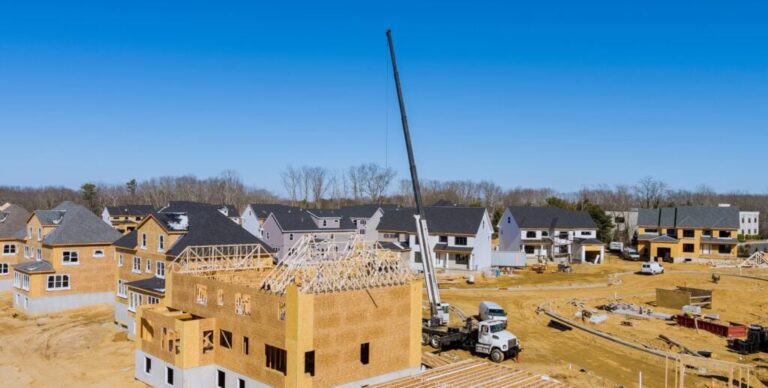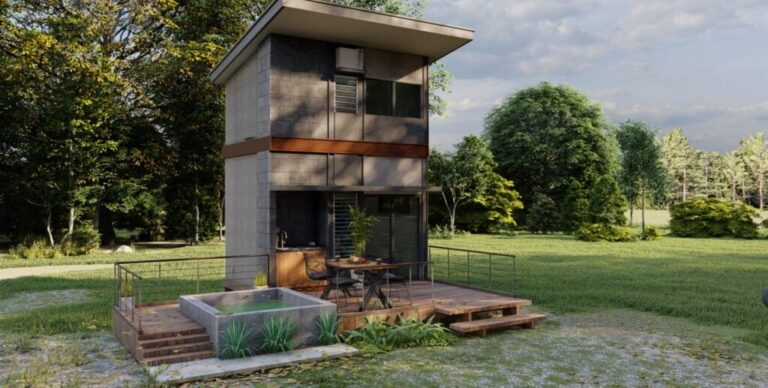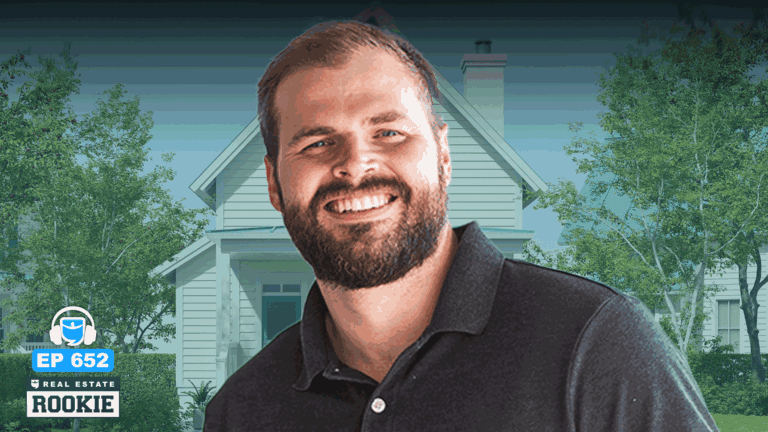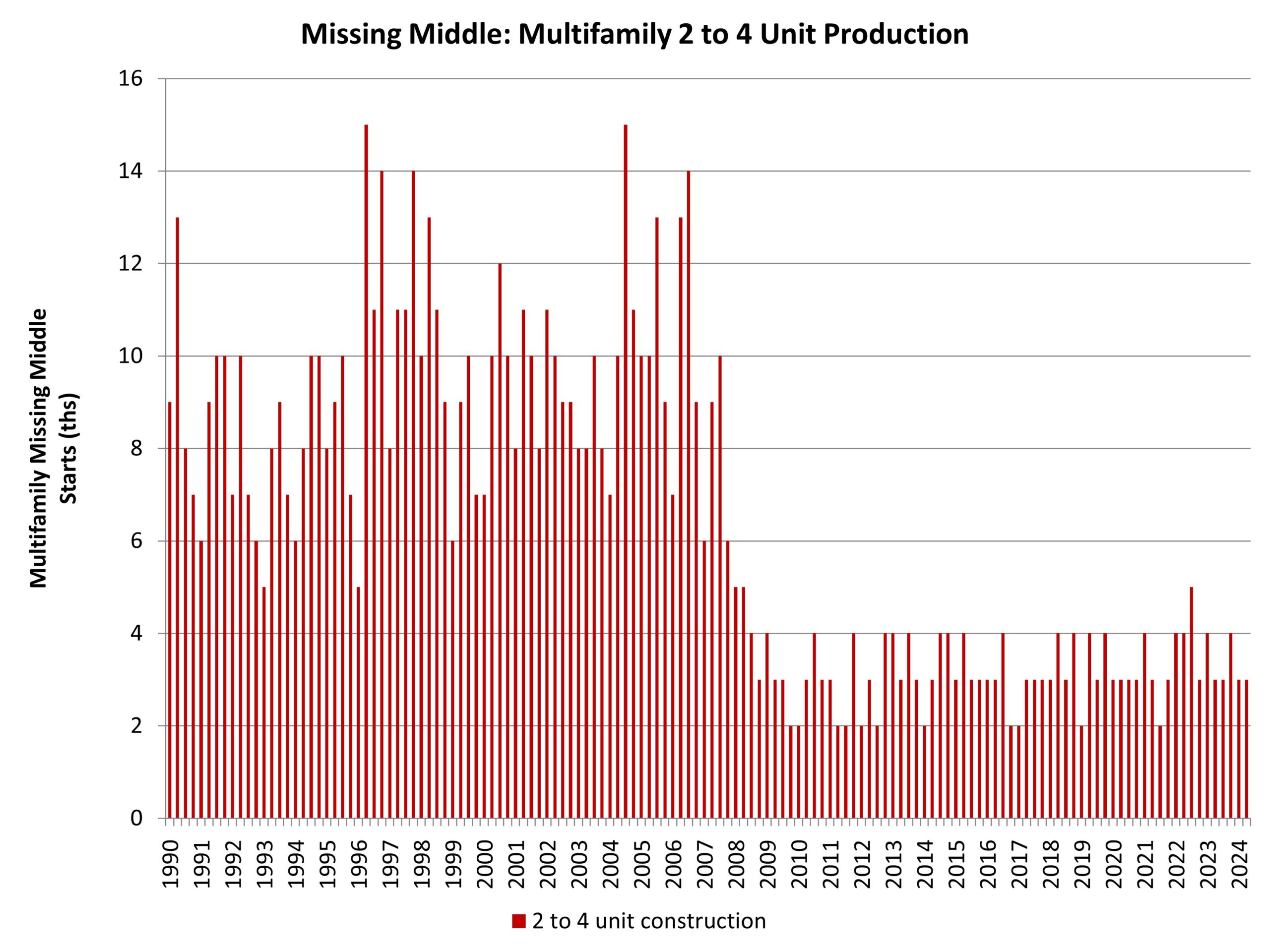Your real estate agent is ignoring you and not sending you deals. You told them you’re interested in investing, but they’re leaving your texts on “read.” This happened a lot to Dave and Henry until they started saying the right thing to agents. Now, they have more investing opportunities than they can handle.
What’s the secret to landing an agent who will put you first? They’re sharing the tactic today.
We’re back, taking questions from the BiggerPockets Forums, helping you invest in real estate wherever you are. Speaking of locations, an investor is worried about this “big city” they’re about to invest in. But Dave and Henry push back, calling this one market a “sleeper” city for investment properties, one that Dave is actively looking to invest in.
A house hacker with a high DTI (debt-to-income ratio) sees a property down the street that they want to buy. But with maxed-out credit, how can he make it work? We’ve got multiple options anyone can try. Would you buy a property with 0% down and a 100% loan? This investor is scared of overleveraging himself, but is it worth it for the low investment?
Finally, we’re giving you actual steps to lower (or at least stabilize) your renovation budget even with rising material and labor costs. Do NOT start buying toilets in bulk, we’ll tell you why…
Dave:
How do you talk to a real estate agent? You’re supposed to be on the same team and a good agent can be the key to finding profitable investment properties and growing your portfolio, but sometimes it can feel like they’re not giving you the time of day. If you’ve ever experienced this, and a lot of investors have stay tuned today, we’re breaking down how to build relationships with agents that will get you access to the properties you need. Hey everyone. I’m Dave Meyer, rental property investor, head of real estate investing at BiggerPockets, and today we’ve got Henry Washington on the show. Henry, what’s going on man?
Henry:
What’s good, man? Glad to be here. I love answering form questions.
Dave:
We tease that we’re going to be talking about agents at the top of the show, but we’re also going to share our opinions on a somewhat controversial big city in the Midwest about whether we would invest there. Weigh the pros and cons of maxing out your leverage and financing, talking about controlling costs during a period of inflation and much more. Henry, you ready to do this? Come on, let’s do it. We got good ones today. I’m excited. This first one, the title of this first question is just so funny. It’s comes from a Samuel OV who says, why do agents not want to talk to me? The question says, I’ve been making some phone calls to agents and I’d say only one fifth or one out of five actually stay on the line to talk while the rest. It seems things are going well until I mentioned that I’m an investor. Why I thought investors and agents work together. Why are they hanging up on me like I’m a salesman? Samuel, this is a great question and I love the way you wrote it. For some reason, this is so funny. Why do you think this is happening, Henry?
Henry:
All right, you licensed agents listening to the show. I get, I mean, I know the hate comments are coming, but I don’t know. Sometimes agents just suck, and here’s what I mean by that. People get their license a lot of the times because they think that selling real estate is not super challenging, and I think a lot of the times they start to realize that it’s another version of entrepreneurship, it’s a sales and marketing business. You got to go drum up your own business. It’s hard to be a successful agent,
Dave:
A lot of competition and
Henry:
There’s a lot of competition, and so I think he’s probably getting hung up on because maybe some people don’t know how to service investors. And then at the same time, there are a lot of people who say their investors or want to be investors and aren’t ready to pull the trigger or are not quite sure what to do. And so agents may spend a lot of time analyzing and sending investors deals and then the investors ghost them or don’t put in offers and they may feel like I do a lot of work for not a lot of results. So I think it’s a little bit of both. Some just aren’t good and that creates a problem. They don’t answer their text, phone calls, emails, and don’t know how to work with investors, and some investors aren’t good and don’t follow up on what they said they were going to do, which is put in offers so that the agent can make some money.
Dave:
I think what you said first that a lot of agents suck is true, and I want to call out that. I think I’ve heard that phrase more from agents from actual real estate agents. Yes, exactly. Than from other investors or from homeowners. I see it. Some of my good friends are real estate agents, and you see they get hung up on too. The other agents hang up on each other too. It’s there’s no baseline of professionalism it seems like for agents, which is annoying, but also an opportunity for good agents to really distinguish themselves. So I would say Samuel, number one, maybe you’re calling the wrong agents. If you are just looking up regular home buyer agents, they might not want to work with investors for whatever reason. Maybe they just know they’re not qualified to answer the questions that you have as an investor.
Maybe they’re too busy, maybe they think you’re a tire kicker and they’re not interested. So I would focus on finding investor friendly agents. We have tools on BiggerPockets to do that. You can also do that through networking like meetup groups. You can usually find good agents through those types of things. So that’s number one. The second thing is because I call a lot of agents looking to invest out of state, I think the real important thing is to try and set expectations upfront for what you’re trying to do as an investor. Sometimes I’ll say, Hey, listen, I’m still in market research mode. I’m not going to pull the trigger on a deal in the next three weeks or four weeks, so don’t send me your hot deals right now. And I think that just setting of expectations builds a little trust that I am serious, I will buy a property, but here’s where I am with my process. I show them that I do have a process that I’m thinking about their time so that they’re not wasting their time. And that type of expectation setting I think usually works really well. Now, if they hang up on you right away, you don’t have an opportunity to even get that out. But I do just generally think that’s how you can approach a conversation with an
Henry:
Agent and just when you’re speaking with anyone, it doesn’t have to be agents, but any service provider, the best way to get them to do what you want is to speak to them in the what’s in it for them, right? People need to know how this relationship is going to benefit me. That’s what they truly want to know, whether they’re going to come right out and say it in the initial conversation or not. So obviously we know agents want to get paid for the effort that they put in, especially if they’re a good agent. Because a good agent is game changing. Like a good agent is one of the best people on your team. It’s just sometimes hard to weed through the nonsense to find the good ones. So when you speak to them, the what’s in it for them is closing transactions. So if you can say, yes, I’m an investor, I have done X amount of deals, or I’m an investor, I plan on doing
X amount of deals. You understanding your goals, where you’re trying to go so that they know the size of the prize. If you plan on buying one property over the next 12 months, just be upfront with them. They may not be the person for you, but they may be able to recommend somebody who wants that business. But if you plan on doing 10 deals over the next 12 months or you’ve done 10 deals in the past, those are things that the agent needs to understand so they can go, okay, this guy’s serious. This person knows what they want to do and I know what’s in it for me.
Dave:
Yep. I think that’s a perfect way to think about it. I know as the person who’s spending money, you often want to be courted for the federal world, but you have to think about it both ways. You need to look for the mutually beneficial relationship and absolutely should, but it does take some time. There is a very big variance between good agents and bad agents and take your time until you find someone, and if you do this, even if they talk to you and you don’t feel like they’re really giving you their full attention, don’t accept that. Just keep going until you find someone who will, because there is someone in every market who knows how to work with investors and is willing to give you the time that you need as an investor and just that’s your job as the investors is to not stop until you find that person.
Henry:
Pro tip, call a title company and ask them who the investor friendly agents are. They see ’em all day every day. They’ll probably give you three, four names off bat.
Dave:
Alright, well that was question one. Thank you Samuel. Hopefully you can get some more agents on the phone after this. Alright, so question number two. Oh, this is good for us. Henry is Chicago worth investing in? We were both there this summer on the Cashflow Roadshow. The question here comes from Maddie Shanahan and Maddie says, I’m looking at the property laws, the laws favoring tenants and the current state of the economy, and I’m second guessing if Chicago is still a smart area to invest, I’d prefer to stay in Illinois because it’s my home state, but I’m willing to look elsewhere too if it means I can get to quicker cashflow. Henry got any thoughts on this?
Henry:
Well, she said she wants to get to quicker cashflow, but everything she mentioned that might be a problem had nothing to do with cashflow. So
Dave:
Well, taxes I guess if the taxes are high, the property taxes are kind of high in Chicago. But I was actually talking to an agent, an investor friendly agent in Chicago the other day about deals, and he was telling me that multifamily actually proportionally isn’t taxed as high as single family in Chicago because they want to incentivize more multifamily development specifically in Chicago. And so property taxes are not as big of an issue if you’re buying at least two units as it is buying single families.
But here’s what I’ll say because I’ve looked into Chicago, I personally think Chicago is like a sleeper city for real estate investing. It’s the third biggest city in the country. It has a remarkably big diversified and dynamic economy. You can’t fake a city like Chicago. Are there challenges? Yes, there are challenges in every city, especially big cities where parts are expensive or there are areas that you wouldn’t want to invest in, but Chicago being massive has neighborhoods for everyone. That’s kind of what I like about it and I like about big cities. If you want a cashflow area, you can absolutely find a cashflow area. If you want to find appreciation area, you can absolutely find it. The other thing I love about Chicago in particular is the housing stock is great. If you like two to four unit buildings, there’s a ton of them that doesn’t exist in other places, maybe in other places in Illinois.
I’m not as familiar with other places in Illinois. I think there are areas like Springfield, Illinois that have a lot of cashflow but are probably less likely to appreciate there’s less certain demand. I know there’s places like Peoria that got hot for a minute, but I am guessing that’s not going to continue. Personally, I know that people have bet against big cities over the last couple of years, New York, San Francisco, Chicago, they’re all coming back, they’re all doing well. Chicago has had some of the strongest rent growth and strongest appreciation for the last couple of years, and most of all, it is still affordable. It is the most affordable large city in the us, which I love. Absolutely. So for me, I literally was talking to an agent about buying deals in Chicago, so I clearly am giving it away, but I think Chicago is a great market to invest in.
Henry:
Yeah, man, if you name five big cities, they’re all unaffordable except for Chicago, so it’s an amazing place to invest. Yes, there are challenges with landlords and tenants, but you will find that in a lot of places there are tons of successful landlords in Chicago. So I would say getting into a local R group and understanding what the successful investors are doing to set themselves up for success as a landlord in Chicago is all you would need to do to get some level of comfort with those risks that you’re thinking about. But oftentimes when I hear questions like this, people don’t think about what they give up if they move to a market that they don’t understand as well. So maybe you’ll find a market that has better landlord tenant laws and maybe even gets you a little bit more cashflow, but what you’ll give up in terms of understanding Illinois and understanding Chicago and the neighborhoods and the relationships that you may already have built with real estate agents or contractors, you give up all that and you have to go build it again. And so yeah, you may be able to get more cashflow, but are you going to be able to actually realize that cashflow if you are operating less efficiently because you don’t have the same
Dave:
Superpowers? Yeah, I would also just say is cashflow the right goal depending on where you are in your market. I personally love these hybrid markets that will probably appreciate and will have some cashflow and that is definitely available in Chicago. The one other thing I want to add about multifamily in general, because Maddie did, I didn’t read the full question, it was kind of long, but she did also talk a little about wanting multifamily is that big cities like Chicago make it hard to build, which is pros and cons, but you don’t have the risk of supply growth that you have in a lot of big cities like Houston, right? Chicago’s third biggest city, Houston’s the fourth biggest city. Houston has huge supply growth. That doesn’t mean you can’t invest there, but it’s just another variable that you have to think about. One good thing about Chicago is that you don’t have that risk that you’re going to turn around next week and there’s going to be 10,000 units under construction.
That’s just not going to happen in a city as dense with as strict zoning regulations as Chicago. So I think that provides a little bit of safety, a little bit of a basement, a floor for your investment, which personally I really like. Alright, those are our first two questions, but we got plenty more questions from the BiggerPockets community to answer right after this quick break. Stick with us. Running your real estate business doesn’t have to feel like juggling five different tools. With simply you can pull motivated seller lists. You can skip trace them instantly for free and reach out with calls or texts all from one streamlined platform and the real magic AI agents that answer inbound calls, they follow up with prospects and even grade your conversations so you know where you stand. That means less time on busy work and more time closing deals. Start your free trial and lock in 50% off your first month at res simply.com/biggerpockets. That’s R-E-S-I-M-P-L i.com/biggerpockets.
Welcome back to the BiggerPockets podcast. Henry and I are answering questions from the BP community forums. Our next question comes from Jordan in Chattanooga. Jordan asked, my wife and I purchased a duplex in March and moved into one of the units after living here for a month. We noticed that another duplex down the street that’s abandoned and trashed, we’ve reached out to the property owners, but I need some help before making an offer on the home. We used up most of our DTI, that’s debt to income ratio on our current property. So what would be the best way to make this happen? It will definitely cashflow about $300 a month. Just a couple other provisions here, we can’t move because we’re only six months into our owner occupied mortgage and the homeowners still have a mortgage, so seller financing wouldn’t work. Should we pull out a HELOC and try to buy it as an investment property? Should we use a HELOC as a down payment? Should we use A-D-S-C-R or private hard money? Any other recommendations? Henry, I’m going to toss this to you, but just want to say, a lot of times we get these questions and it depends, but you told us a lot of information about yourself and your personal situation, so I do think we can actually answer this one. Henry, take a stab at it.
Henry:
Well, I think there are several ways to attack this if you’re going to live in it, then obviously I know you said you’ve got about six months left, but that’s a ton of time so you could contract it and then close on
Dave:
It. That’s true
Henry:
After about six months
Dave:
Doesn’t seem like the seller’s in a rush,
Henry:
Right?
Dave:
Right.
Henry:
So you can just put it under contract with a six month close and then close on it the day you are able to, and then you can use the conventional for sure, which would limit your down payment to what, 5%. So
That’s one option. Option number two is you could buy it with a commercial loan from a small bank. So you could go to any local community bank there and get a loan for the purchase and the renovation. They’ll want 85% of the purchase and they’ll give you a hundred percent of the rehab. So you’ll need a 15 ish percent down payment in order to get into it. Now the caveat with that is it’s going to put you on a three or five year adjustable rate. So if I were, once you move into it, if you decide to move into it, you can refinance it onto a conventional loan and then that’ll put you on a 30 year fixed and then you can pay off the adjustable rate mortgage once you move into it, but that’ll get you in with only a 15% down payment. The other cool thing about that type of loan product is you can borrow the down payment.
So if you bought this with a conventional loan or A-D-S-C-R loan, borrowing the down payment is going to be a little more challenging. So if you wanted to use funds that weren’t yours, in other words like borrowing from a private money lender or something, it might be a little more challenging, but with a loan from a commercial bank, then you could borrow that down payment. So that is a lot of leverage, but just giving you options here of what you could do to limit your cash and then also if you do the loan from the small bank, they’re going to care less about your DTI and more about the value of the asset. So DTI is not going to be a big issue in that scenario either. A third option is to take out some of the line of credit to use it as your down payment. If you were to buy it traditionally, and I would double check, did you get pre-approved to find out if a lender would lend to you? Given your current DTI position? Don’t just make an
Dave:
Assumption
Henry:
That’s true that you don’t have enough DTI for a bank to give you a loan. Go ask, start with the lender you already have their relationship with and see what they would say.
Dave:
Yeah, I think that’s all great advice. The one option I will add is A-D-S-C-R loan. I think that could work really well and Jordan had also asked about a heloc, which I would maybe do a combo. If this were me, I would maybe buy it with A-D-S-C-R and then use the HELOC to renovate because we didn’t talk about that, but he said the property was abandoned and trashed, so assuming you’re going to need to get some financing, you might be able to pay for that out of pocket. I have no idea, but assuming you need to do it, I would just get the DSCR for the purchase and then use the HELOC for the expense and then pay that off pretty quickly just using income from the property and then keep the DSCR for or if you move into a refinance that into conventional. Alright, next up is a question from Kevin who asked us, is leveraging 100% with a VA loan a bad idea? I’m weighing out my options for using my VA loan for the first time. I’m very aware of the risk that comes with leveraging 100% and I’d like to get your opinion on mitigating that risk if it should even be an option. The plan is to house hack a duplex to lower my monthly expense and save to grow my portfolio. I don’t plan on purchasing a property that I can’t comfortably cover while it’s vacant. What are your thoughts?
Henry:
Yeah, I think it’s leveraging a hundred percent with the VA loan a bad idea. The answer to that is it depends because it’s going to depend on your personal financial situation. If you’re doing a hundred percent VA loan because you don’t have any money to operate a property, then yeah, it’s a bad idea because there’s still expenses, things that are going to come up that you need cash for, and so investing when you have no money is a problem because things end up costing money. Now, if you’ve got some savings and you can operate the property, then using a hundred percent leverage is way less risky. Think about it from this perspective. If I get into a property, I don’t put any money down and let’s say that that property doesn’t appreciate and I sell it in a year, you’re probably going to lose money, but that money that you lose is essentially just a down payment.
You would’ve had to pay if you would’ve put 20 to 25% down on the backend. The benefit is if you borrow a hundred percent and you buy a property in appreciating area, chances are that property is going to appreciate. Chances are you are going to add value to that property and then you have an opportunity to get out of that property if those things worked in your favor, so you could end up in a position where you maybe pay a little bit of money if you have to get out or you don’t pay anything because of the appreciation and the value you’ve added. So you can spend the money on the front side, you can spend the money on the backside. My biggest caveat when buying a hundred percent leveraged is if you don’t have any money and that’s why you’re using a hundred percent leverage, you’re probably putting yourself into a bad position.
Dave:
I completely agree. People look at a hundred percent leverage, which just for everyone what this means is taking out a mortgage for a hundred percent of the purchase price, you’re putting 0% down. I know people get a little up in arms about this, but the risk in that is not really that your mortgage goes underwater. The risk is that you cannot pay your mortgage and it goes underwater. It’s when those two things happen at the same time that there is a lot of risk because if you bought a property with a hundred percent leverage, if your property value went down 2% next to you, you’d be underwater and know it would happen absolutely nothing as long as you’re still paying your mortgage. The problem is if that happens and then you can’t pay your mortgage, that’s when trouble really starts. This is basically what happened in 2008.
This happened at scale that sort of caused the whole market to collapse, and so I think Henry’s advice about how sure are that you can pay that mortgage even if there’s vacancy. He said, I don’t plan on purchasing a property that can’t comfortably cover while it’s vacant. What are your thoughts? So then I think it’s probably okay, as long as you are budgeting, really understand that there are going to be expenses that you might have vacancies, and I think particularly in this market, I’m going to put on my Henry hat and say, you got to buy below market comps because in a lot of markets I personally believe we’re going to see one or 2%, maybe 3% price declines in the next year or so. So you got to buy below market comps to make sure even if that happens, you’re not going underwater. Like I said, if it goes underwater and you’re paying a mortgage, not the end of the world, but you might as well not have that situation by just buying really well and you have the opportunity to negotiate to be patient right now to buy deep, and so I would just really focus on finding that and then I think you could do it.
The other option if you are worried about going underwater is just put 5% down. It sounds like you have some capital. If you’re saying that you can cover a vacant property, I would do that. The other last thing I’ll say is I like this plan just because it is a house hack within duplex. I probably wouldn’t give the same advice if it was a single family home that you were just living in. If you were just a homeowner, I wouldn’t say that, but because it’s a house hacker, you’re going to get that additional income. I do think that provides an extra layer of protection.
Henry:
What seasoned investors use 100% leverage for is the scale to keep their cash in their pocket so that they can capitalize on opportunities that may come that require the cash versus if you can get into a deal that doesn’t require the cash that you’re buying at a discount that you know can monetize anyway and that you know have cash reserves to cover, you’re limiting your risk and keeping your cash in your pocket by leveraging a hundred percent. Whereas a lot of people here, a hundred percent financing and think, I don’t have a ton of money, so I’m going to do that. That can get you into a tough spot financially. So it’s a tool in the tool belt meant to be used in the right situation.
Dave:
Yep, absolutely. I was talking to someone at BP Conn about it. There’s a young guy who was about to get out of the Navy and was asking me, with house hacking with a VA loan. I was like, that might be the best single way to get into real estate. If you’ve got access to a VA
Henry:
Loan
Dave:
And you’re going to house hack, it’s such a good way to do it.
Henry:
Yeah, get into real estate for free.
Dave:
Yeah, it’s an amazing opportunity that our service people deserve and have earned, and you should absolutely leverage that. All right, we got to take another quick break, but we’ll be back with more community questions right after this. The Cashflow Roadshow is back. BiggerPockets is coming to Texas, January 13th to 17th, 2026. Me, Henry Washington and Garrett Brown will be hosting real estate investor meetups in Houston and Austin and Dallas along with a couple other special guests. And we’re also going to have a live small group workshop to answer your exact investing questions and help you plan your 2026 roadmap. Me, Henry and Garrett are going to be there giving you input directly on your strategy for 2026. It’s going to be great. Get all the details and reserve your tickets now at biggerpockets.com/texas. Hope to see you there.
Welcome back to the BiggerPockets podcast. Henry and I are answering questions from the BiggerPockets community. I should mention, if you want your questions answered, post them on the BiggerPockets forum and we might pick them. And you’ll also get expert advice from literally thousands of investors who are there answering questions every single day for free. So you should definitely check that out. Our question now comes from Kelly Schroeder who asks, how do you keep renovation costs under control when prices spike? Henry, this has your name all over it. The question is, I’ve been hearing from a lot of investors lately about how renovation costs keep sneaking up, whether it’s materials, labor, or even permit days for those actively flipping, this can turn a solid deal into a stressful one fast. I’m curious, what are your go-to strategies to keep rehab costs predictable and profits steady? Do you lock in materials early, build relationships with consistent contractors or budget a certain percentage buffer? I’d just say yes to all three. We’d love to hear how you’re adapting, especially with so many market shifts happening this quarter. I mean, I think Kelly kind of knows the answer, right? Right. He put, do you lock in materials early if you can. I think that’s kind of hard.
Henry:
That requires volume.
Dave:
Yeah. Yeah. So I think that’s hard and also creates its own risk. Like what if you don’t use it, then you are just holding inventory. Build relationships with consistent contractors for sure. Absolutely. Or budget a certain percentage buffer. I would always do that regardless of inflation. So I think those are good tactics and I have some other tactics to share, as I’m sure Henry does too. But I think the other thing here is being realistic and accepting that there’s only so much you can do about this. You cannot change macroeconomics. That’s literally why it’s called macroeconomics. It is bigger than you. And so there’s just things about the labor market. There are things about tariffs and supply chains and AI that are not in your control, and those are things that you need to handle in your underwriting. It is less in your controlling the cost, it’s finding the deals that can accommodate the costs, and I think that is really the most important shift to have instead of being like, how do I get that toilet cheaper? You might, and if you can, good for you, but I wouldn’t count on
Henry:
It. Absolutely. You nailed it 100%. That is exactly where I was going to go. Yes, the things he suggested are things you should think about, but the most important thing is to be aware of the environment and the economics, which it sounds like you are listening to shows like this one, listening to shows like on the market so you can understand what’s going on so that you can update your underwriting. Because what he said in there was that if the costs creep up on you, then a profitable deal turn into a non-profitable deal pretty quickly. Well, to me that says you didn’t underwrite the deal with enough room for you to make a mistake, which means if you know that costs are increasing, you need to increase your renovation budget and timeline, and that means you need to decrease what you’re willing to pay for a property in this environment, and that’s what’s going to save you, so that if and when things do run over, you’re still going to end up profitable because you bought such a great deal.
Dave:
Yep, exactly. And then
Henry:
Yes, I do a little bit of a buffer in my rehab cost so that I have a little more room in the event that I needed. The contractor relationships is the huge piece right now. I have a contractor who bids labor and materials for me and they bid them fairly well, and so that helps me keep the cost down because that contractor has his superpowers at getting whatever materials that the prices he can get them at. Now, as we do more projects, if I start to see that slide up, I can either change my underwriting to offer less or I can try to go find materials cheaper myself. It gives me some options, but I have to be monitoring what these things cost so that I can make game time decisions. But at the end of the day, it’s being aware and adjusting your underwriting. There’s tons of little secrets. I get a lot of my stuff on Amazon, which I can get fairly inexpensively. The finishes, Amazon beats the big box and Home Depot stuff in pricing all the time and buy a lot. And so a lot of the times we’re not buying finishes from Lowe’s or Home Depot. We’re getting ’em from Amazon and we’re saving 10, 15, 20, sometimes 30 and 40% on prices.
Dave:
I mean, shopping around, just going to local stores, seeing what’s leftover, those kinds of things work, but I think Henry nailed it too. It’s just like you could do these things, but I also think you have to just accept too that your contractors’ costs are going up too. So if their bids are coming in a little higher, well, materials are more. If they’re bidding, labor and materials, labor is going up, construction labor is costing more. So these are just things that we have to accept, and in these sort of transitionary markets that we’re in right now, it’s a little bit harder, but eventually this is going to have to get baked into the price, and sellers might be resistant to that now, but that’s just how this works on a broad scale is eventually the costs get baked into the value of the properties that we’re buying.
And that might not be good news to every seller out there, but that’s just how it works. So I think you’re asking a good question and thinking about this ahead of time, but trying to figure this out before you buy something is going to be way easier than trying to figure out how to save costs once you’re already in it. Alright, well, this is a lot of fun. Thank you for joining us here, Henry, and thank you all so much for these questions. These were really good questions. Keep ’em coming. Keep asking these questions, not just for the podcast, but on the BiggerPockets forums there are people answering questions, helping each other succeed. That is what the BiggerPockets community is all about. That’s what we want to see all of you doing on the forums. And we might just pick one of your questions for our next q and a episode of the BiggerPockets podcast. Thanks again, Henry.
Henry:
Thank you for having me,
Dave:
And thank you all so much for listening. We’ll see you next time.
Help us reach new listeners on iTunes by leaving us a rating and review! It takes just 30 seconds and instructions can be found here. Thanks! We really appreciate it!
Interested in learning more about today’s sponsors or becoming a BiggerPockets partner yourself? Email [email protected].










